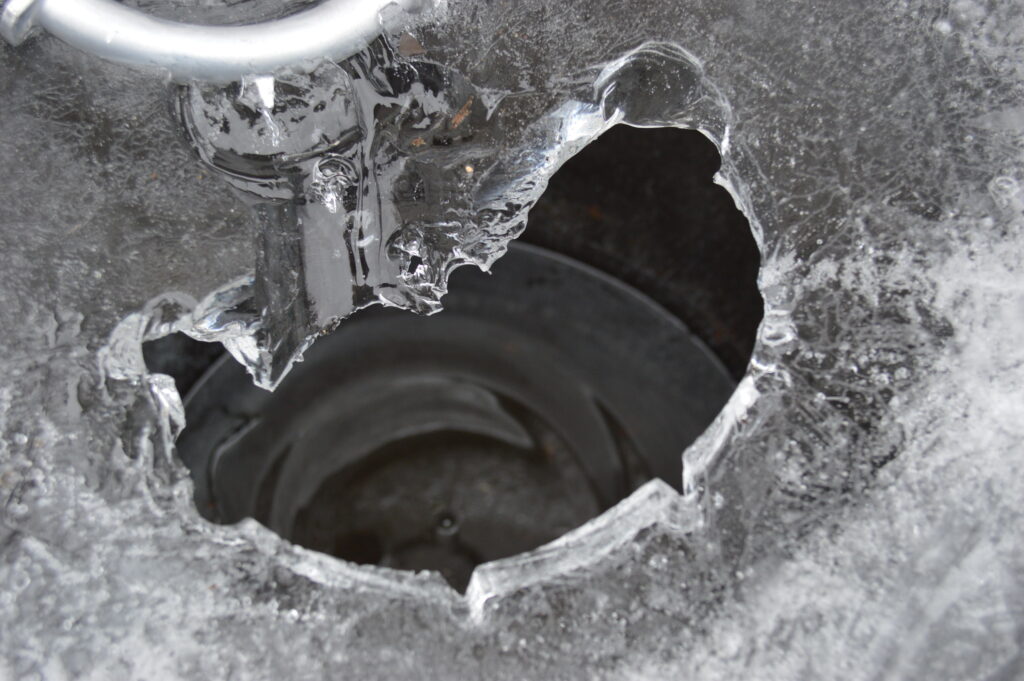
A bucket de-icer begins to work its magic on a frozen rain barrel in Iowa in mid-November 2018. (photo/Cindy Hadish)
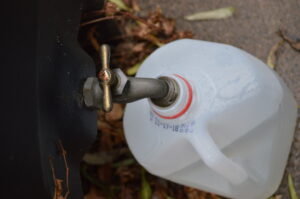
Typically, rain water from the barrel is stored in gallon jugs with lids to use for houseplants during the winter. (photo/Cindy Hadish)
(UPDATE: Nov. 30, 2021) Since this de-icer experiment, the rain barrels have successfully captured rain water in subsequent years, and lesson learned to empty them before ice forms. This fall, they were perhaps emptied too soon, as Iowa is predicted to experience 50-degree temperatures, even into December.
A week or so before Thanksgiving every year, I empty my rain barrels to save the water for my houseplants and to save the plastic from cracking during the winter.
Last week, on a relatively mild day, I turned on the spigot of my 65-gallon barrel and nothing came out. Not even a drip.
Iowa’s weather this fall was too cold too soon and I had waited too long. The water had already frozen, and upon taking the lid off, it appeared to be iced all the way to the top.
I tried pouring hot water over the ice in another barrel that was only half full, (or was it half empty?) and that did the trick to thaw enough to at least be able to overturn the barrel and empty the ice.
Hot water did nothing for my full rain barrel, though, so I drove to a farm store and purchased a livestock bucket de-icer.
The 250-watt device is designed for 5-gallon buckets, but the helpful employees at the store recommended it over the more powerful 1,000-watt de-icers.
Placing it on top of the ice, it took just 15 minutes or so to create a hole in the top layer.
From there, I could see water more than halfway down in the barrel, but the ice was too thick to get through, so more time passed as I moved the circular de-icer around the top of the ice. (Warning: don’t touch the device directly.)
Finally, once it broke through, I thought the process was over, but the 2-3-inch coating of ice at the top was only the beginning. The water at the bottom of the barrel wasn’t truly at the bottom, as the entire container was glazed in that same 2-3-inch crystalline coating. My own ice castle, in a barrel.
So the hour that I had hoped to devote to the project turned into a half-day, but with the use of the bucket de-icer and more hot water, I was finally able to overturn the barrel and empty the remaining ice. I don’t think that would have been possible without the de-icer, so perhaps it was worth the $35 investment.
Both rain barrels will be stored this winter in the garage, but whether or not they were truly saved and survived intact will only be answered next spring when, hopefully, they will be collecting rain off my house with no evidence of cracks.
Miss your garden already? Check out the area’s winter farmers markets to get your fresh veggie fix.
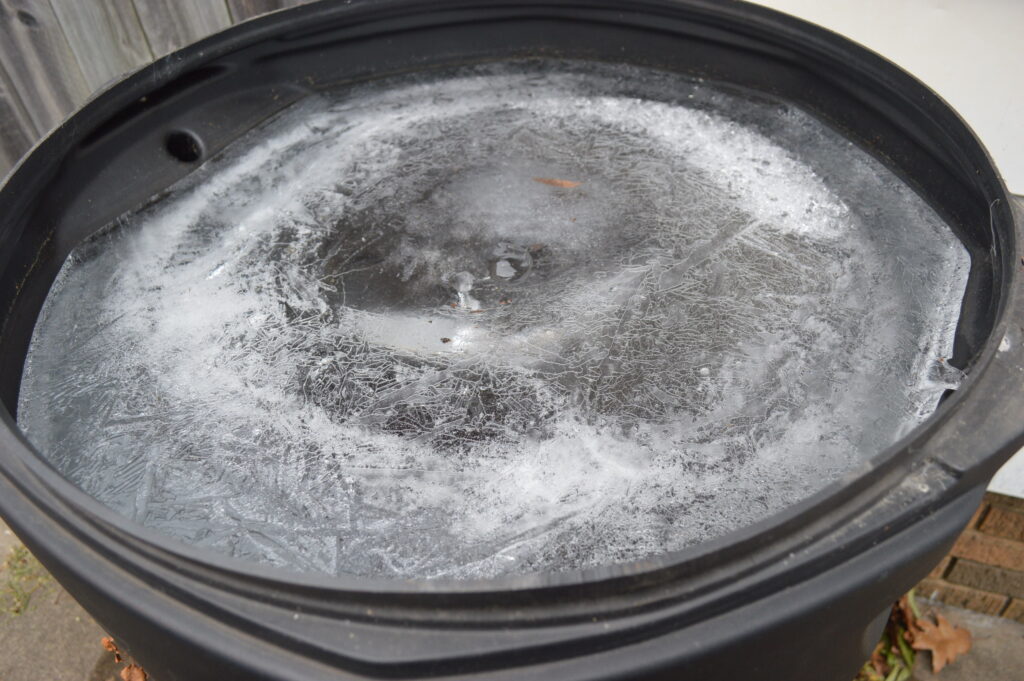
With the lid off, the 65-gallon rain barrel appeared to be frozen all the way to the top. (photo/Cindy Hadish)

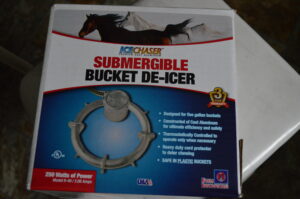
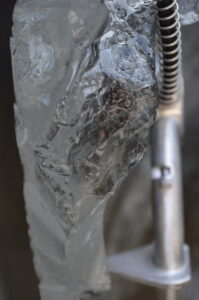
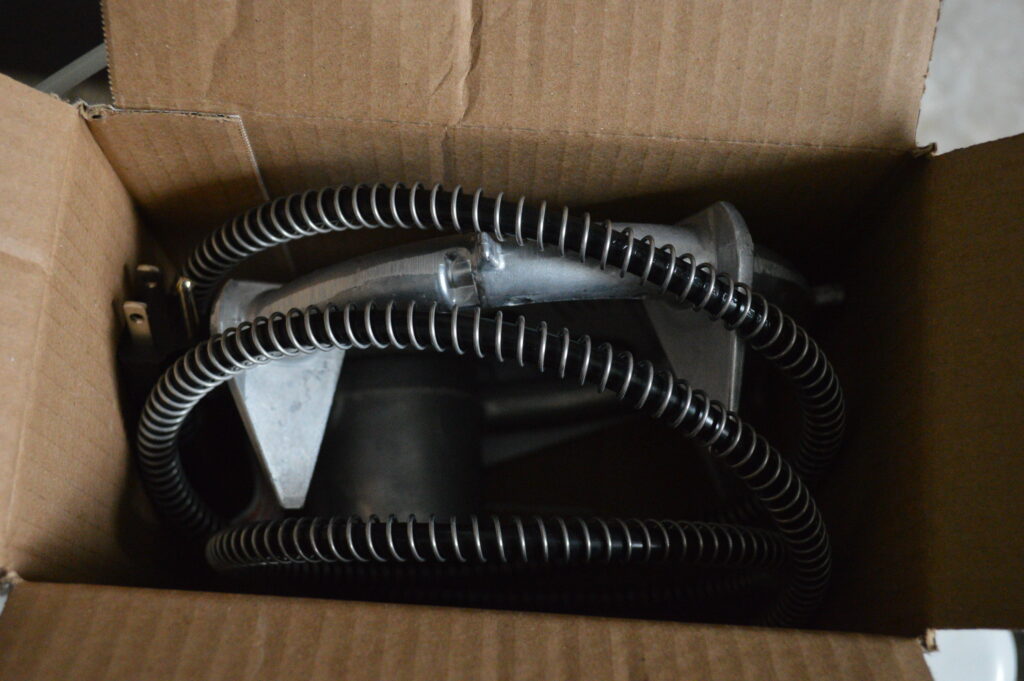
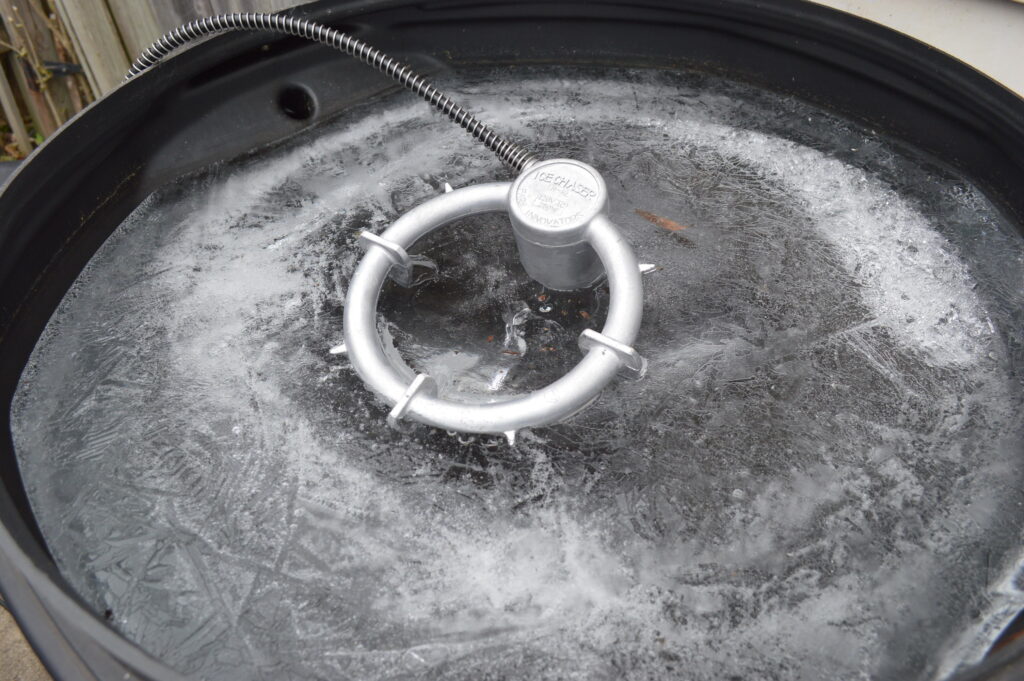
Hmm, my barrel also froze too early for me to empty it first. (In past winters, I\’ve dumped it, flipped it over, and left it empty outside with no problems.) Any chance it can survive the winter filled with ice and without taking this extra step?
It probably depends on the material of the rain barrel. Ice has a tendency to expand and could crack the plastic. Let us know if it survives!
Hi Cindy
So? Did it save your rain barrel?! I searched for an archived article with an update, but can’t find one. I’m currently debating buying a heater for my similarly frozen rain barrel!
Hi Jackie. Yes, it worked! Thanks for the suggestion. I’ll update the article.
Thanks Cindy, Yaaaaay!! I’m very happy to hear that. It’s warming up to 7C here on Thursday, I’m hoping that’s enough to dislodge the ice, but if not, I’m taking your advice! Thanks again for the helpful suggestion!
Hope it works for you!